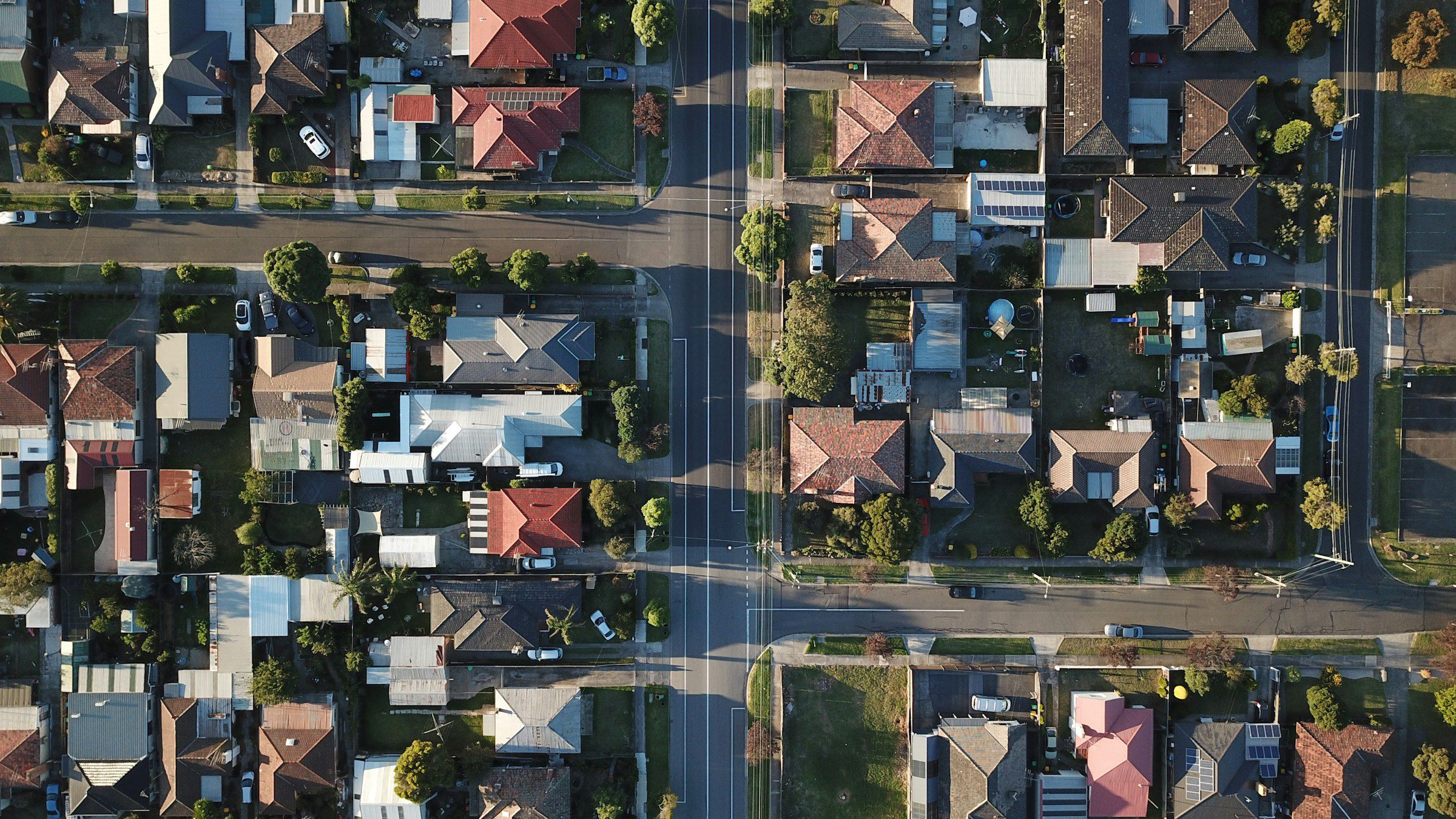
Some Australian suburbs have bucked the trend of skyrocketing house prices. A survey shows certain areas stagnating, offering unique opportunities for homebuyers.
The Australian property market has long been a topic of national obsession, with house prices in many areas skyrocketing over the years. However, not all suburbs have followed this trend. In fact, a recent survey by PropTrack has revealed that some suburbs across Australia’s major capitals have seen house prices stagnate or even decrease over the past decade.
For prospective homebuyers, especially those looking to invest in their first home, these suburbs represent unique opportunities—bargain properties that offer the chance to own a home at prices reminiscent of 2014.
In this blog, we’ll explore the implications of these findings, discuss why some suburbs have remained stagnant in terms of property value, and outline the benefits of buying in these areas now. We’ll also touch on strategies for saving for a house deposit over ten years, and why timing your entry into the property market can make all the difference.
The PropTrack Survey: Suburbs Defy Australia’s Property Boom
PropTrack’s recent survey has uncovered a surprising trend. While most of Australia’s property market has surged in value, a handful of suburbs in major capital cities have seen little to no change in property prices over the last decade. These areas have remained largely immune to the rapid price increases seen in other parts of the country, making them an intriguing option for potential homebuyers.
Some of these suburbs, located in cities like Sydney, Melbourne, and Brisbane, are seeing house prices that are either on par with or even lower than what they were in 2014. For those who have been saving diligently for a home deposit, these suburbs represent a rare opportunity to buy a property at a price point that seems almost frozen in time.
Sydney
The city that often comes to mind whenever people speak about Australia does have a high standard of living. What if you discover some suburbs’ property values have remained firm in ten years, despite the 2014 median price for a house shooting up from $712,750 to $1.42m now?
The evaluators analysed listings in the city and found stable or declining prices in at least three areas. In Parramatta, there’s much sales activity in the Olympic Park, where a property that averaged $700k ten years ago now sells for close to $685k, and some Rosehill places lost value by $10k over the past decade. If you’re eyeing the northwest, how about Box Hill? Over the past decade, property values there went down by close to $1m because changes to the large land stock enabled more houses to be built on a single tract.
Melbourne
Down in Melbourne, the PropTrack team identified Caulfield East, Werribee South, and Essendon North as those with the largest ten-year price declines for apartments, as many of them were 40 per cent cheaper – in hard currency, they are estimated at $220k less. If you are looking to buy a unit in Docklands and South Yarra, observers noted that prices there have not changed much in ten years. The news comes as the Melbourne city government revealed plans to build as many as 140,000 new houses in the inner city areas.
Brisbane
If you are considering settling in the Greater Brisbane area, a look at the PropTrack data may point to underperforming suburbs that are now generating competition for investors and first-time owners. For example, if you were eyeing an apartment in Dutton Park, Bowen Hills, and Kelvin Grove but missed out ten years ago, look again – the listings have reduced prices by as much as $39,000. Despite a price boom generated by the pandemic, some properties did not see a major increase over ten years but still changed hands.
The evaluation team stated that a typical flat in Brisbane City may be offered for sale at $590k – when it was just $520k a decade ago. If that place is for rent, landlords may be setting the median weekly rent at $700.
One local property agent hinted that because of cost-of-living issues, some Brisbane buyers were content with getting an entry-level flat. Some price declines were also reported at 12 Townsville suburbs, and a certain suburb in Ipswich.
Why Some Suburbs Have Stayed the Same
Understanding why certain suburbs have seen stagnant or declining house prices requires a closer look at the factors that influence property values. The following are several reasons why a suburb might experience little to no growth in property prices over a decade.
Economic Factors
Suburbs that have struggled with economic downturns, lack of employment opportunities, or a decline in local industries are less likely to see a significant increase in property values. If a suburb’s economy has been stagnant or in decline, the demand for housing may also drop, leading to stable or falling prices.
Infrastructure and Amenities
The lack of new infrastructure projects or amenities can impact a suburb’s appeal. Areas that haven’t seen improvements in public transport, roads, schools, or shopping facilities may not attract new residents, leading to stable property prices.
Population Trends
Some suburbs may have seen a decline in population or slower population growth compared to other areas. Without an influx of new residents, demand for housing can remain flat, contributing to stagnant prices.
Reputation and Perception
Perceptions of a suburb can significantly impact property values. If a suburb has developed a negative reputation over the years—whether due to crime rates, environmental issues, or other factors—its property prices may remain stagnant.
The Benefits of Buying in Stagnant Suburbs
For those looking to buy their first home or invest in property, suburbs with stagnant house prices offer several potential advantages.
Affordability
The most obvious benefit is affordability. With prices remaining at or near 2014 levels, these suburbs provide an entry point into the property market that would be unattainable in other, more rapidly appreciating areas.
Potential for Future Growth
While these suburbs have seen little growth over the past decade, that doesn’t mean they won’t appreciate in value in the future. Buying at a lower price point now could pay off if the suburb undergoes revitalisation or if broader economic conditions improve.
Lower Competition
Suburbs with stagnant prices may see less competition among buyers, making it easier to negotiate a good deal. This could also mean a less stressful buying process overall.
Larger Property Options
In some of these suburbs, you might find that your budget stretches further, allowing you to purchase a larger property or a home with more features than you could afford in a more expensive area.
Saving for a House Deposit: The Ten-Year Strategy
For many Australians, saving for a house deposit is a long-term goal that requires careful planning and discipline. The prospect of buying in a suburb where prices have remained stable over the past decade might seem like a golden opportunity, but it’s still crucial to have a solid savings plan in place. Here are some tips for saving for a house deposit over ten years:
Set Clear Goals
Determine how much you need to save for a deposit, taking into account the price range of properties in your target suburb. Set clear, achievable milestones along the way.
Budget Wisely
Create a budget that allows you to save consistently without sacrificing your quality of life. Look for areas where you can cut back on non-essential spending and direct those savings toward your deposit.
Invest Your Savings
Consider putting your savings into a high-interest account or low-risk investments that can help your money grow over time. A financial advisor may guide you on which accounts have the appropriate amount of risk.
Take Advantage of Government Schemes
Explore government programmes like the First Home Owner Grant or the First Home Super Saver Scheme, which can help boost your savings and make home ownership more attainable.
Stay Informed
Keep an eye on the property market and stay informed about any changes in your target suburb. If prices start to rise, you may need to adjust your savings goals or timeline. To this end, you must remain in contact with property agents operating in those prospect suburbs.
Timing Your Entry into the Property Market
Timing is a crucial factor when entering the property market. While buying in a suburb with stagnant prices can be a smart move, it’s important to consider broader market trends and economic conditions. If interest rates are low and housing demand is steady, it could be an ideal time to buy. However, if economic uncertainty or potential market downturns are on the horizon, it might be wise to proceed with caution.
Additionally, consider your own financial situation and long-term plans. Are you prepared for the responsibilities of home ownership? Do you have a stable income and a solid financial cushion? Answering these questions can help you determine whether now is the right time to make a purchase.
Conclusion
Investing in a suburb where house prices have remained unchanged over the past decade presents a unique opportunity for savvy buyers. With careful planning, diligent saving, and a keen eye on the market, you could secure a property at a bargain price—one that has the potential to appreciate in value in the future. PropTrack’s survey highlights that not all areas of Australia’s property market have followed the same upward trajectory, and for those willing to explore these undervalued suburbs, the rewards could be significant.
For those looking to enter the property market, particularly first-time buyers, these suburbs offer a chance to own a home without the financial strain that comes with buying in more expensive areas. So, if you’ve been saving for a house deposit over the past decade, now might be the perfect time to explore these overlooked gems and make your move into the Australian property market.
DISCLAIMER: This article is for informational purposes only and is not meant to replace established property advice. The information listed is based on the most accurate data at time of writing. 2 Ezi is not affiliated with any industry research company and is not involved in property sales.

